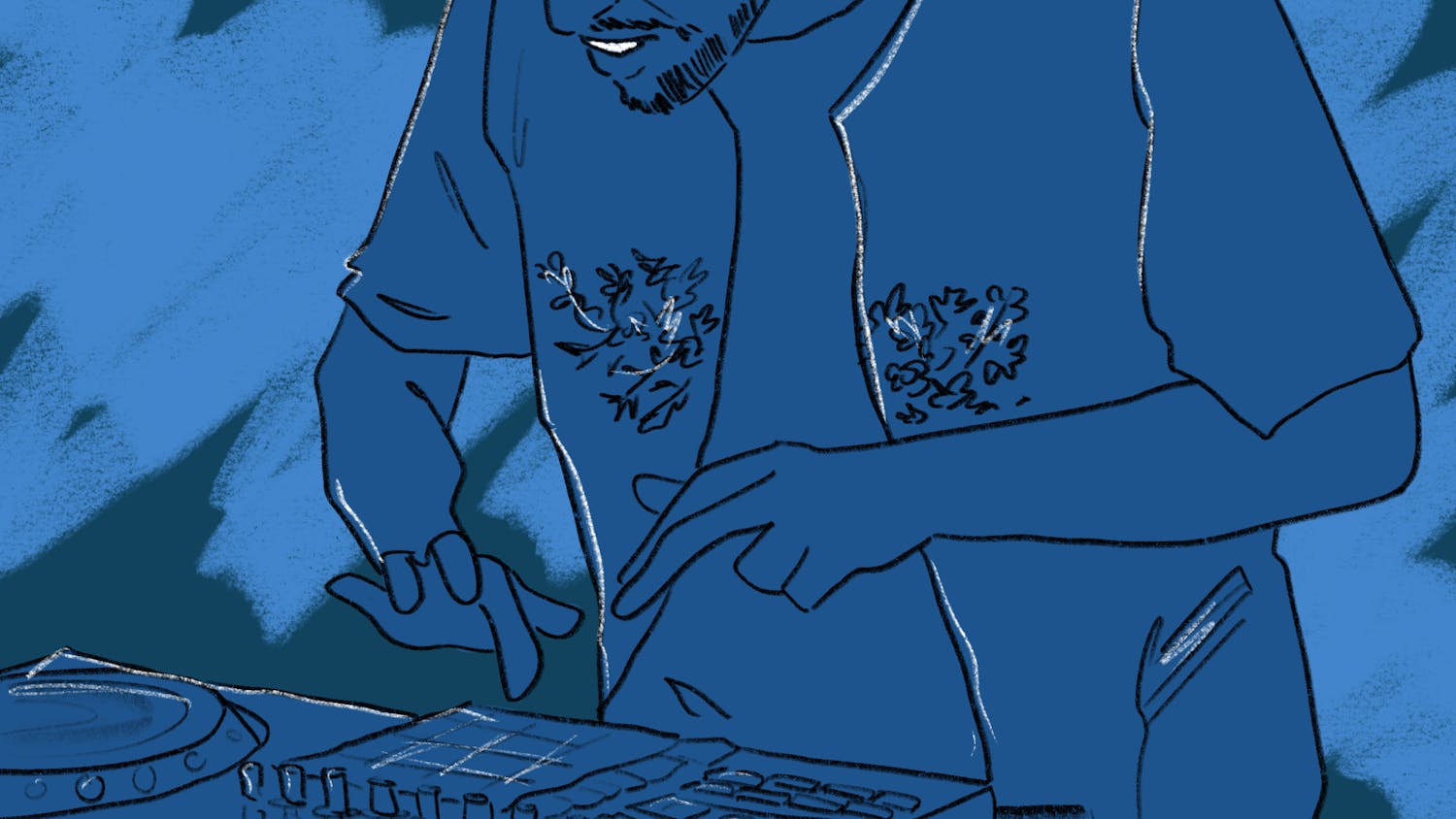Under the direction of Rebecca Darling, the Dartmouth Dance Ensemble performed wonderfully fluid and moving pieces at its “DisCONNECTed” performance at the Top of the Hop on Saturday. The gripping show illustrated the problem of a generation that holds technology supreme and renders real human interaction virtually obsolete.
Darling, this fall’s guest director, is the founder of the Studio D dance center in New Milford, Conn. Darling has toured with the renowned Pilobolus Dance Theatre, a performance company that was founded at the College in the 1970s.
“That’s one of the reasons why I chose to take the job to come here; there’s a lot of history,” Darling said of the Dartmouth correction.
Darling praised the dancers’ generous spirit and willingness to try new things, and said she hopes to return to Dartmouth to contribute to future dance performances.
Emerging from the back of the Top of the Hop, each dancer, dressed in black, walked toward the stair railings and froze in a pose. The room teemed with anticipation as the dancers began to move around the railing, one after the other. The room was silent as the domino effect of dance moves progressed. The dancers shifted to the back turquoise wall and froze once more, in sharp contrast to the brilliant color of the backdrop.
The show was split into three parts, each made distinct by the music choices and dance moves performed. The first segment began while Radiohead’s “15 Step” boomed from the speakers, in stark contrast to the previous silence.
Darling chose this song because its “mechanical, maniacal, repetitive” aspects mirrored the dancers’ motions, she said.
Danielle Jones ’17, a member of the ensemble, said this part “showed the main disconnect” between the dancers, who made no eye contact and stepped over and in front of each other. The intense beat of the song immediately captured the audience’s attention and focused it on the movements of the dancers.
The next segment highlighted the recognition of the isolated movements of the first part. Featuring Gary Jules’ haunting ballad, “Mad World”, the scene conveyed a sense of reflection as the dancers began to connect and move in synchronization.
“The dancers seemed to respond emotionally to ‘Mad World,” Darling said.
The song choice was as a commentary on the new societal mindset that does not value direct human connection, creating instead a mad world.
The closing segment of the dance evolved from the relationship the dancers established throughout the performance. The dancers’ movements become interconnected, and they established clear eye contact with one another. With a beautiful instrumental Philip Glass song for context, this final segment of the dance inspired hope.
“The last part is obviously really connected,” Jones said. “That’s where we did all of the lifts and there was a lot of eye contact and touching, so it was the most connected part of the dance.”
Jones praised the collaborative nature of working with Darling.
“Rather than her just giving us choreography and having us learn it, it was a lot of us working together to come up with what we would do,” she said.
Parts of the performance were in fact improvised by the dancers, lending a free and uninhibited feeling to the movements.
“The performance reminded me of water,” audience member Simone Schmid ’17 said. “It was smooth, organic and not forced or rigid. The repetition of moves was like the rippling of water. I have never seen anything like this before.”
The use of the performance space was striking. Darling said the circular, abstract design of the room added to the performance’s overall feel. The dancers began around the railings of the staircase, flowed to the back wall and covered the entire floor space.
“I thought it was really cool how well they used this space,” Alexis Savini ’14 said. “It’s not something I would have thought of before as a space for a dance show.”
Darling’s style of using partners was new to some of the dancers.
“My background is in ballet, so I didn’t do much partner work before,” Amy Liang ’17 said.
Darling’s remarkably fluid choreography and utilization of partnering to impart its meaning sets this performance apart from others. Even if the audience had not come to the performance knowing of its subliminal message concerning human connection through social media, the music and fluid connection between the dancers would still resonate. The evolution seen throughout the three segments of the performance signifies hope for society’s own evolution toward greater human connection.
This article has been updated to reflect the following correction:
Correction Appended: November 11, 2013
The original article incorrectly described the dancers as arriving up the staircase at the Top of the Hop. The dancers emerged from the back of the Top of the Hop space.



